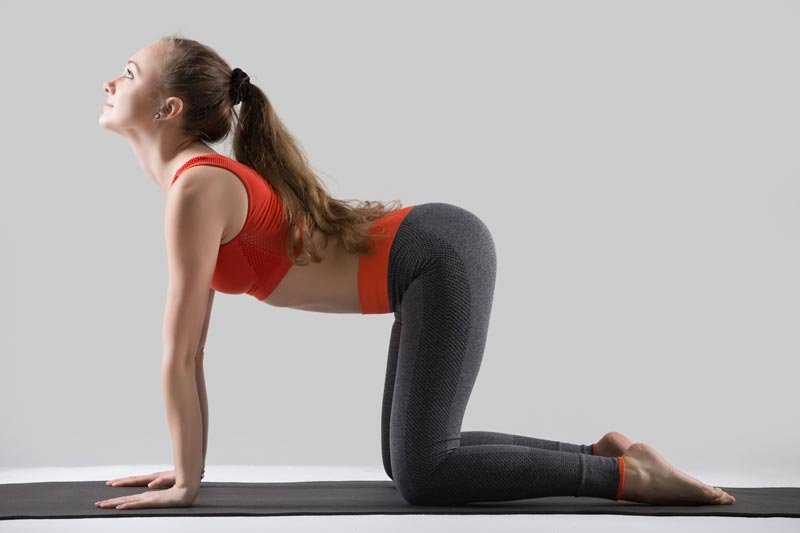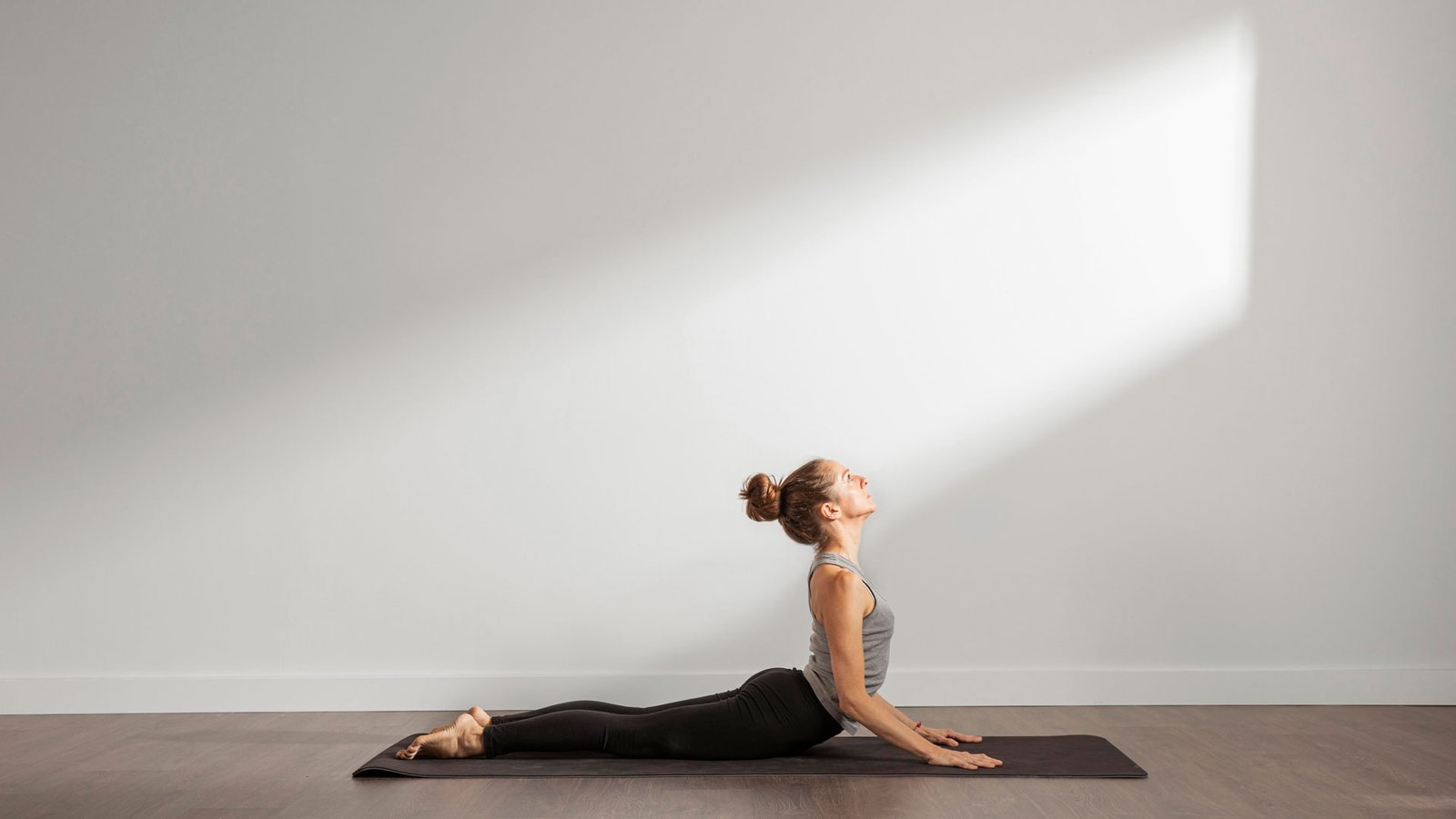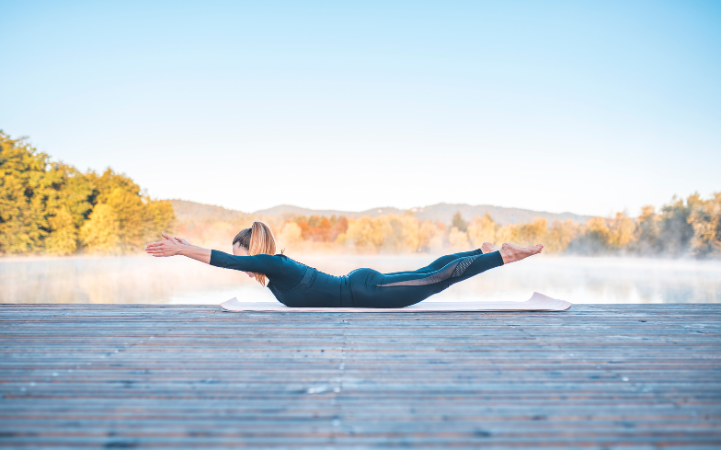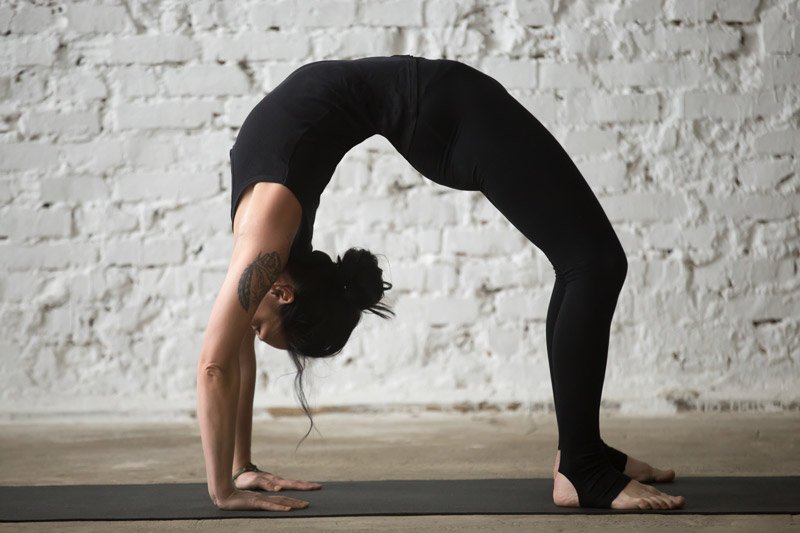Bitilasana, or Cow Pose, is a foundational yoga posture often practiced in conjunction with Marjariasana (Cat Pose) to create a flowing sequence that enhances spinal mobility and overall relaxation. Derived from the Sanskrit word Bitila (cow) and Asana (pose), this posture mimics the gentle arch of a cow’s back. It is simple yet effective, making it accessible for practitioners of all levels.
Steps to Perform Bitilasana
- Starting Position: Begin on all fours in a tabletop position. Place your wrists directly under your shoulders and your knees beneath your hips. Keep your spine neutral and gaze downward.
- Inhale and Arch Your Back: On an inhalation, lift your chest and tailbone toward the ceiling, creating a gentle arch in your lower back.
- Open Your Shoulders: Roll your shoulders back and away from your ears, creating space in your neck.
- Gaze Forward: Look slightly upward or straight ahead, keeping your neck relaxed and aligned with your spine.
- Engage Your Core: Slightly activate your abdominal muscles to support the lower back and prevent overextension.
- Flow with the Breath: Combine Bitilasana with Marjariasana (Cat Pose) for a flowing sequence. On exhalation, move into Cat Pose by rounding your spine and tucking your chin toward your chest.
- Repeat: Continue flowing between Cow Pose and Cat Pose for several breaths to enhance spinal flexibility and warmth.
- Return to Neutral: After completing the sequence, return to a neutral tabletop position.
Benefits of Bitilasana
- Improves Spinal Mobility: Gently stretches and strengthens the muscles around the spine, enhancing flexibility and relieving stiffness.
- Promotes Relaxation: Encourages mindfulness and relaxation, reducing stress and tension.
- Enhances Posture: Strengthens the back and neck muscles, promoting better posture and alignment.
- Stimulates the Nervous System: Activates the parasympathetic nervous system, promoting a sense of calm and balance.
- Aids Digestion: The gentle arch of the spine massages the abdominal organs, stimulating digestion and relieving bloating.
- Supports Breath Awareness: Increases lung capacity and encourages deep, mindful breathing.
- Prepares the Body: Acts as a warm-up pose, preparing the spine and muscles for more challenging yoga asanas.
- Reduces Back Pain: Alleviates tension in the lower back, making it a therapeutic pose for those with mild back discomfort.
Tips for Practicing Bitilasana
- Focus on Alignment: Keep your wrists under your shoulders and knees under your hips to ensure proper support and balance.
- Breathe Deeply: Synchronize the movement with your breath for a meditative and calming experience.
- Engage Your Core: Avoid over-arching your lower back by lightly activating your abdominal muscles.
- Use Props if Needed: Place a blanket under your knees for added comfort, especially if practicing on a hard surface.
- Combine with Cat Pose: Flow between Cow Pose and Cat Pose to maximize the benefits of spinal movement and relaxation.
- Move Slowly: Perform the pose slowly and mindfully, paying attention to the sensations in your spine and breath.
- Practice Regularly: Include Bitilasana in your daily yoga routine to improve flexibility and spinal health over time.
Cautions and Contraindications
- Back or Neck Injuries: Avoid excessive arching of the back if you have existing injuries or discomfort in these areas.
- Wrist Pain: If you experience pain in your wrists, practice on your fists or forearms, or use props for support.
- Knee Sensitivity: Place extra padding under your knees if you feel discomfort.
- Pregnancy: Pregnant practitioners should practice with caution and avoid excessive pressure on the abdomen.
- Dizziness: If you feel lightheaded, pause the practice and return to a comfortable seated position.
- Hyperextension: Avoid sinking too deeply into the pose, especially in the lower back, to prevent strain or injury.
Bitilasana is a gentle yet powerful pose that fosters flexibility, relaxation, and mindfulness. Its versatility makes it a favorite among yoga practitioners of all levels, whether used as a warm-up, a transition pose, or a restorative posture. By practicing Bitilasana with attention to alignment and breath, you can cultivate a sense of ease and openness in both body and mind. Regularly incorporating this pose into your yoga practice will support spinal health, reduce tension, and enhance your overall well-being.






